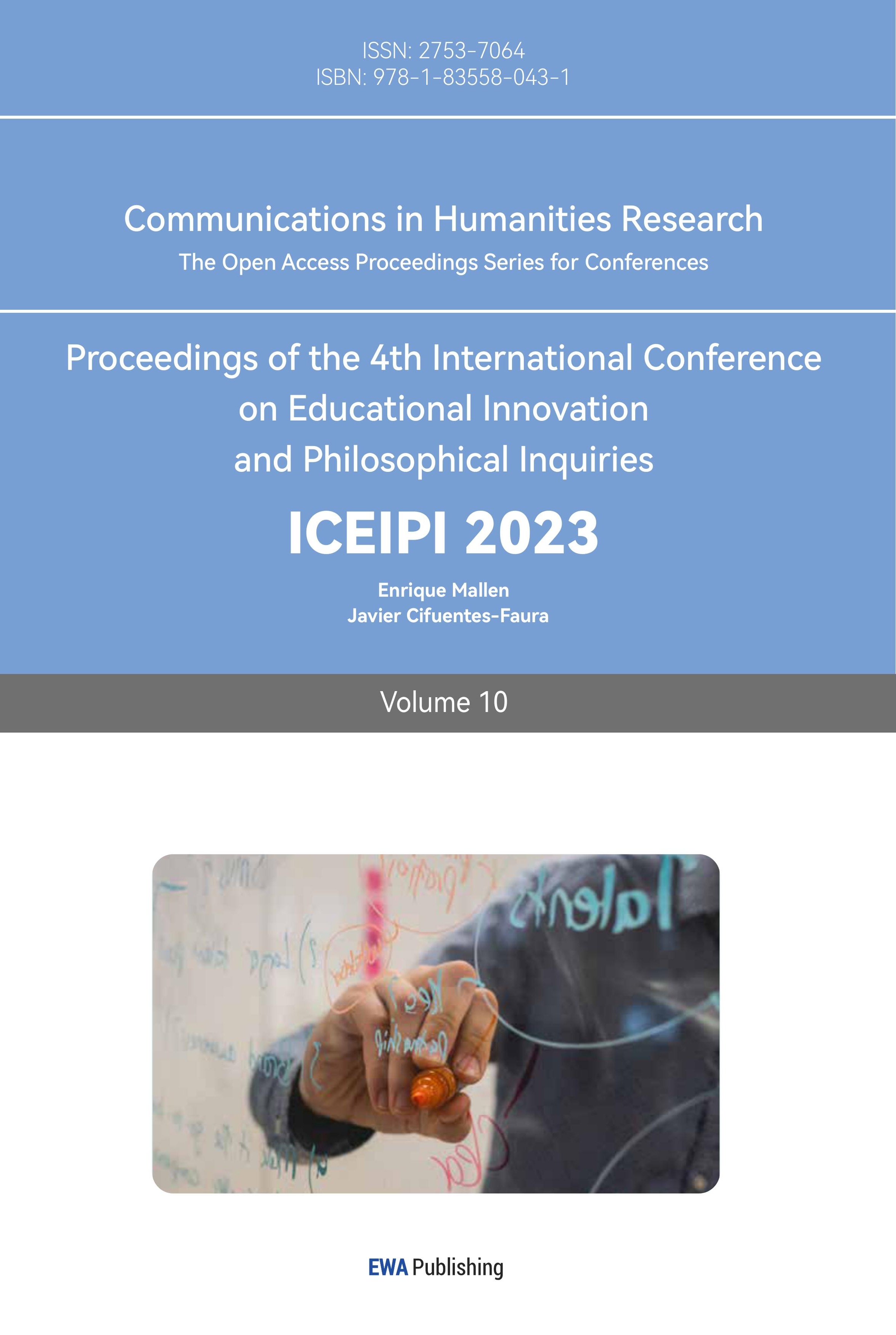1.Introduction
English is globally used nowadays, and the number of English speakers in China is increasing significantly as well. The researcher found that Chinese learners of English are often influenced by their first language, which is Mandarin, resulting in distinct pronunciation patterns. One challenge Chinese learners face in their English pronunciation is using the English phoneme /r/. Moreover, most Chinese learners can only be infinitely close to the standard pronunciation but never sound like English native speakers. As a result, the researcher makes the assumption that when people try to learn a new language, their previous languages tend to cause interference. This phenomenon also appears in the field of phonology, which can be explained by the mutual exclusivity assumption. Even some students have trouble saying the proper sound. This paper investigates the impacts of the mutual exclusivity effect on Chinese learners of English by comparing their pronunciation of the same words with the /r/ sound with standard American English pronunciation. 40 respondents from the north and south of China ranging from 20-40 age will be asked to pronounce certain words containing the /r/ sound. It is hoped that the study will shed light on English learning for Mandarin speakers who are learning English.
2.Literature Review
2.1.Mutual Exclusivity Assumption
The concept of mutual exclusivity assumption is a cognitive principle often applied in linguistic studies, particularly in language acquisition and lexical semantics. Much of the current studies on linguistics pay particular attention to the topic of the mutual exclusivity assumption. During the process of learning new words for children, the mutual exclusivity bias leads them to believe that new words do not pertain to objects for which they already have a name. The bias also explains how youngsters may acquire large lexical resources in such a short period of time [1]. According to Markman & Wachtel, children cannot directly observe the tendency for one-to-one word-concept mapping, but even very young children behave in a consistent way [2]. This is due to the existence of abstract syntactic categories. The “mutual exclusivity” effect, or one-to-one regularity, is evidence that kids follow it. In other words, it refers to the tendency of language learners to assume that each object or concept has only one label or name and that labels are mutually exclusive, meaning that one label should correspond to only one object or concept. This assumption is thought to play a role in how children acquire new words and meanings in their early stages of language development.
Sánchez et al. cited Iruela’s idea in their article that the previous language that the second language learners acquired will cause obstacles in interfering with the second language’s proper pronunciation [3]. Mutual exclusivity applies to categories that fall under the same level of specificity. Adults and children both are likely to categorize objects with basic names [4]. The authors reveal that children who are monolingual may refrain from categorizing the same objects under two different labels, even if the names are in different languages. In addition, based on the study they conducted, they found that monolingual adults also obey mutual exclusivity when they try to understand new words. Thus, it can be assumed that according to the mutual exclusivity assumption, language learners will form a fixed pronunciation pattern in their brains. The mutual exclusivity assumption can also be considered to apply to adult Chinese learners of English whose first language is only Mandarin from the phonological perspective. Adult Chinese students’ English pronunciation will be interfered with by their first language because of their previous pronunciation habits. In addition, in the study conducted by Lewis et al, in 2020, after analyzing data collected from the multilingual population on the relationship between both language status and age and the “mutual exclusivity” effect, they suggest that older age and being monolingual both indicated a larger effect size, which means a larger “mutual exclusivity” effect [5]. As a result, it is believed that the older the Chinese learner is, the more obvious the mutual exclusivity phenomenon will appear.
2.2.Chinese /r/ Sound and American English /r/ Sound
There are two /r/ sounds in Mandarin. One of them resembles the American /r/ sound. Another /r/ is pronounced further back in the throat than the other. Érhuà is a phonological phenomenon in Mandarin Chinese where a final /r/ sound is added to the end of certain words or syllables, which is similar to the American /r/ sound. For example, “huaer” (flower). Mandarin evolved a series of monosyllabic unstressed suffixes through an evolutionary process. These suffixes gradually eroded until they were reduced to a simple /r/. This phenomenon can be explained as “érhuà”, which is also called “rhotacism”. /r/ is a true grammeme with a phonic signifier and various realizations [6]. This sound change is commonly found in Beijing Mandarin, as well as other dialects of northern China. The /r/ sound is added after the final vowel in a syllable or word and changes the pronunciation of the word [7].
According to Zhang, Érhuà and American rhotic /r/ are pronounced in very similar ways, with a distinct rolling of the tongue [8]. However, the American rhotic /r/ sound is produced when air passes through an obstruction in the mouth cavity caused by the tip of the tongue pointing to the back of the upper palate in a rolling motion. It is a post-alveolar based on the position it pronounces [9]. Zhang suggests that the biggest difference between American rhetoric “r” and Chinese érhuà is that when pronouncing the /r/sound [ɚ] in érhuà, the tip of the tongue is not allowed to touch the upper palate, while the tip of the tongue rests on the back of the upper palate. Some Mandarin Chinese words begin with an /r/ sound, which is the second /r/ sound. For example, “ri” (sun). This “r” in Mandarin is pronounced as a rhotic initial and is produced by rolling the tongue’s tip toward the front of the hard palate and repeatedly flattening the lips without protruding forward. The tongue is less curly in the English /r/ than it is in the Chinese /r/ because the tip of the tongue raises up at the back of the gum [9]. Thus, the Mandarin Chinese “r-” sound doesn’t have any English equivalent, which is also suggested by Sui & Li, who suggest that though the pronunciation of American /r/ and Chinese /r/ sounds are similar, the way and the position they are pronounced are different. But Chinese people from the north may have advantages in pronouncing the American /r/ sound. We should note that not all aspects of the letter “r” are rhotic in American English. The “r” distributed before the vowel does not form a rhotic movement, so it is not rhotic according to the pronunciation method. Only the letter “r” after the vowel in American English is a rhotic sound [8].
3.Methodology
There are in total 40 respondents aged 20-40 years old including 25 females and 15 males participating in this research. 10 of them are native American English speakers, 15 of them are native Mandarin speakers from South China, and the rest of the 15 participants are from North China. Participants are asked to pronounce certain words containing the/r/ sound: the English word “part” and the Chinese word “ri” (sun). The typical pronunciation of Mandarin speakers selected from the results are females from South and North China. And the male American English speaker is chosen randomly as a contrast.
4.Result
It can be seen from Figure 1 that the first formant (F1) value is around 800 Hz, and the second formant (F2) value is around 1660 Hz. There is no obvious variation in the /r/ syllable when the speaker transforms from the syllable of /pa/ to /r/. In Figure 2, the F1 value is around 620 Hz, and the F2 value is around 1300 Hz. In Figure 3, which is the standard American English pronunciation, the value of F1 is about 685 Hz, and the value of F2 is about 1400 Hz. The features and values of F1 and F2 in Figure 2 and Figure 3 are similar.
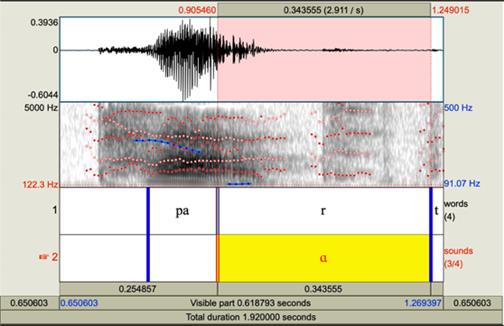
Figure 1: /r/ in the word “part” (female from south China).
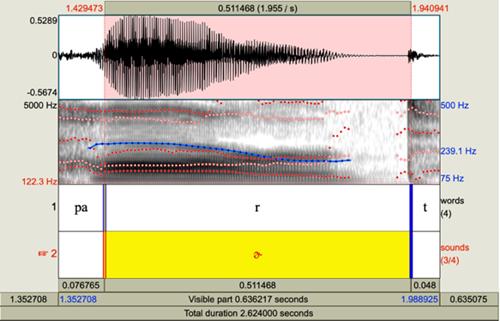
Figure 2: /r/ in the word “part” (female from south China).
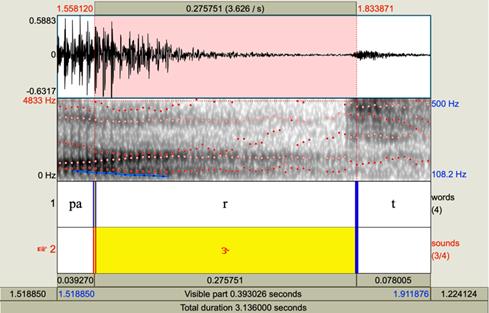
Figure 3: /r/ in the word “part” (American male).
In Figure 4, the value of F1 is around 410 Hz, and the value of F2 is around 1650 Hz. In Figure 5, the value of F1 is around 442 Hz, and the value of F2 is around 1547 Hz.
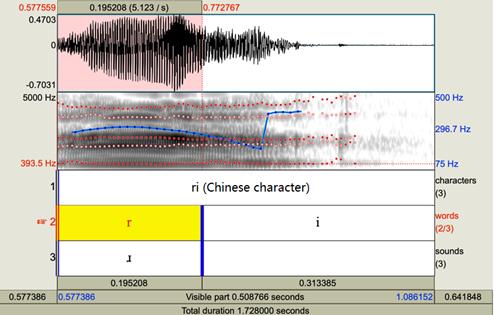
Figure 4: /r/ in Chinese character “ri” (female from south China).
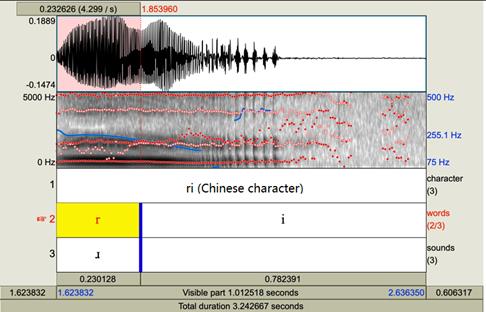
Figure 5: /r/ in Chinese character “ri” (female from north China).
5.Discussion
Based on the data shown above, we can see that the female speaker in Figure 1 who is from South China has a lower tongue position than speakers in Figure 2 and Figure 3, and she has more fronted tongue placement than the other two as well, which makes the shape of her mouth more round compared to the American standard /r/ sound in the word “part”, pronouncing as /ɑ/. However, the mouth shape of the female speaker in Figure 2, who is from North China, is flatter and lower according to the values of F1 and F2 it shows, which sounds like /ɚ/. It is similar to the American standard /r/sound but with a higher and more back tongue position. Therefore, the female from North China pronounces the word closer to the standard sound than the female from the South. The speaker from North China actually makes the /r/ sound very similar to the American r sound but the speaker from the South has trouble pronouncing it. Thus, North Chinese people who can speak érhuà can pronounce the American /r/ sound easier.
According to the information in Figure 4 and Figure 5, the mouth shape of Chinese speakers is lower and pronounced more fronted than the speakers pronounce English words. Additionally, the values of F1 and F2 in Figure 4 and Figure 5 are lower than those in Figure1,2, which means that the height of the tongue of the speakers are higher which proves that American English /r/ and Chinese pinyin /r/ are different. Moreover, Chinese speakers have been interfered with by their first language when pronouncing English words.
6.Conclusion
R is a challenging sound for Chinese learners of English to pronounce because of the impact of the mutual exclusivity effect. Mandarin can influence Chinese learners to pronounce English words correctly. However, North Chinese have the advantage of pronouncing the American /r/ sound owing to the érhuà in their dialects, while South Chinese have trouble pronouncing it. Despite the negative effects that mutual exclusivity assumption brings, Chinese learners can try to overcome the pronunciation challenges by practicing and imitating native English speakers. In future studies, age and gender should also be investigated in the research of the /r/ sound among Chinese learners of English.
Although this research sheds light on the field of phonology, there are several limitations that can’t be neglected. One limitation of this essay is that it only focuses on the challenges faced by Chinese learners in pronouncing the English sound /r/. The essay does not explore the difficulties that learners from other language backgrounds may face when trying to produce this sound. Additionally, the essay could have provided more specific and detailed examples of exercises and techniques that Chinese learners can use to improve their pronunciation of /r/, rather than just mentioning general resources such as tongue twisters and video tutorials.
References
[1]. Haryu, E., & Imai, M. (1999). Controlling the application of the mutual exclusivity assumption in the acquisition of lexical hierarchies. Japanese Psychological Research, 41(1), pp. 21-34.
[2]. Markman E.M., Wachtel G.F. (1988). Children’s use of mutual exclusivity to constrain the meanings of words. Cognitive Psychology, 20 (2), pp. 121-157.
[3]. Garita Sánchez, María del Rosario, González Lutz, María Isabel, & Solís Pérez, Nathalia. (2019). English vowel sounds: Pronunciation issues and student and faculty perceptions. Actualidades Investigativas en Educación, 19(3), pp. 33-67.
[4]. Au, T. K., & Glusman, M. (1990). The Principle of Mutual Exclusivity in Word Learning: To Honor or Not to Honor? Child Development, 61(5), pp. 1474-1490.
[5]. Lewis, M., Cristiano, V., Lake, B. M., Kwan, T., & Frank, M. C. (2020). The role of developmental change and linguistic experience in the mutual exclusivity effect. Cognition, 198, 104191.
[6]. Canepari, L., & Cerini, M. (2011). Mandarin: the-r grammeme and the so-called érhuà phenomenon.
[7]. He, Lei. (2014). Linguistic Variation in Contact: the Use of erhua and rusheng in the Xianggang Community in China. Theses - ALL. 59.
[8]. Zhang Wenjun. (2014). Contrastive analysis of American English rhotic Sound [r] and Chinese érhuà Sound. Journal of Educational Institute of Jilin Province, 30 (7), pp. 129-130.
[9]. Sui Huili & Li Shifang. (2004). Studies on the Phonetic Characteristics of Approximant /r/ in English. The Northern Forum, (01), pp. 50-52.
Cite this article
Chen,H. (2023). How Mandarin Influences R in the Accented American English of Chinese Learners. Communications in Humanities Research,10,42-48.
Data availability
The datasets used and/or analyzed during the current study will be available from the authors upon reasonable request.
Disclaimer/Publisher's Note
The statements, opinions and data contained in all publications are solely those of the individual author(s) and contributor(s) and not of EWA Publishing and/or the editor(s). EWA Publishing and/or the editor(s) disclaim responsibility for any injury to people or property resulting from any ideas, methods, instructions or products referred to in the content.
About volume
Volume title: Proceedings of the 4th International Conference on Educational Innovation and Philosophical Inquiries
© 2024 by the author(s). Licensee EWA Publishing, Oxford, UK. This article is an open access article distributed under the terms and
conditions of the Creative Commons Attribution (CC BY) license. Authors who
publish this series agree to the following terms:
1. Authors retain copyright and grant the series right of first publication with the work simultaneously licensed under a Creative Commons
Attribution License that allows others to share the work with an acknowledgment of the work's authorship and initial publication in this
series.
2. Authors are able to enter into separate, additional contractual arrangements for the non-exclusive distribution of the series's published
version of the work (e.g., post it to an institutional repository or publish it in a book), with an acknowledgment of its initial
publication in this series.
3. Authors are permitted and encouraged to post their work online (e.g., in institutional repositories or on their website) prior to and
during the submission process, as it can lead to productive exchanges, as well as earlier and greater citation of published work (See
Open access policy for details).
References
[1]. Haryu, E., & Imai, M. (1999). Controlling the application of the mutual exclusivity assumption in the acquisition of lexical hierarchies. Japanese Psychological Research, 41(1), pp. 21-34.
[2]. Markman E.M., Wachtel G.F. (1988). Children’s use of mutual exclusivity to constrain the meanings of words. Cognitive Psychology, 20 (2), pp. 121-157.
[3]. Garita Sánchez, María del Rosario, González Lutz, María Isabel, & Solís Pérez, Nathalia. (2019). English vowel sounds: Pronunciation issues and student and faculty perceptions. Actualidades Investigativas en Educación, 19(3), pp. 33-67.
[4]. Au, T. K., & Glusman, M. (1990). The Principle of Mutual Exclusivity in Word Learning: To Honor or Not to Honor? Child Development, 61(5), pp. 1474-1490.
[5]. Lewis, M., Cristiano, V., Lake, B. M., Kwan, T., & Frank, M. C. (2020). The role of developmental change and linguistic experience in the mutual exclusivity effect. Cognition, 198, 104191.
[6]. Canepari, L., & Cerini, M. (2011). Mandarin: the-r grammeme and the so-called érhuà phenomenon.
[7]. He, Lei. (2014). Linguistic Variation in Contact: the Use of erhua and rusheng in the Xianggang Community in China. Theses - ALL. 59.
[8]. Zhang Wenjun. (2014). Contrastive analysis of American English rhotic Sound [r] and Chinese érhuà Sound. Journal of Educational Institute of Jilin Province, 30 (7), pp. 129-130.
[9]. Sui Huili & Li Shifang. (2004). Studies on the Phonetic Characteristics of Approximant /r/ in English. The Northern Forum, (01), pp. 50-52.





